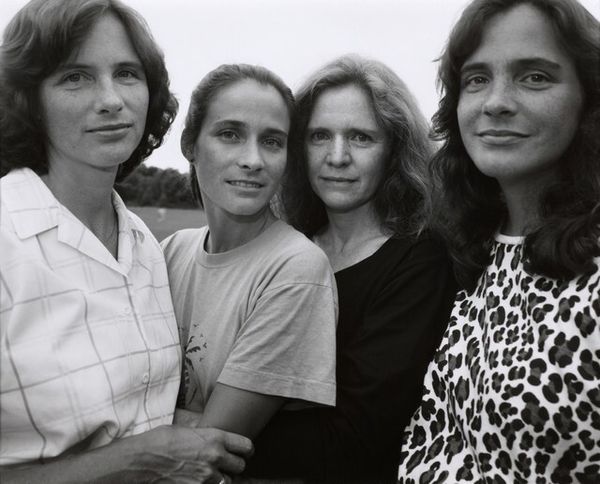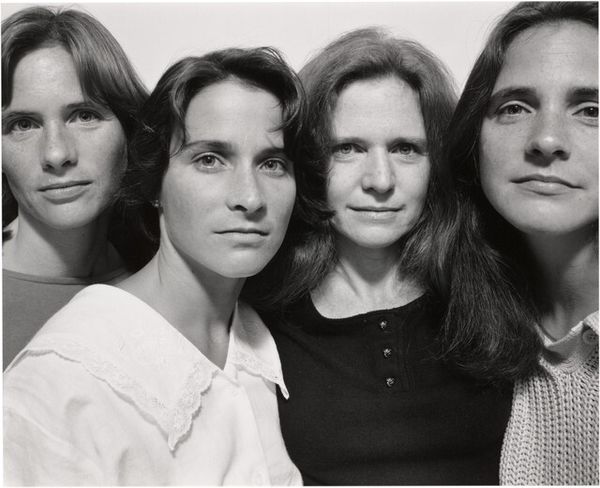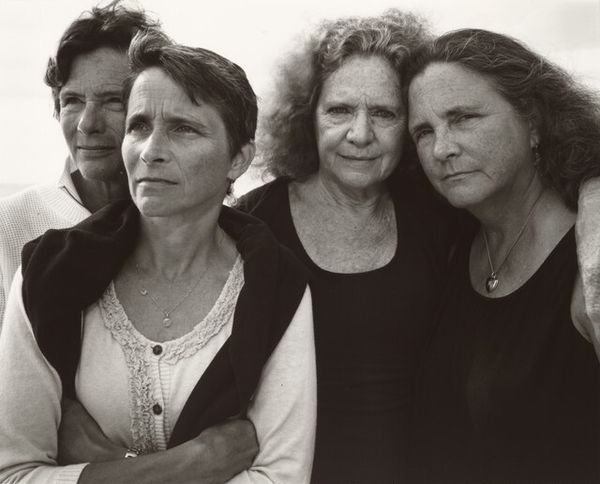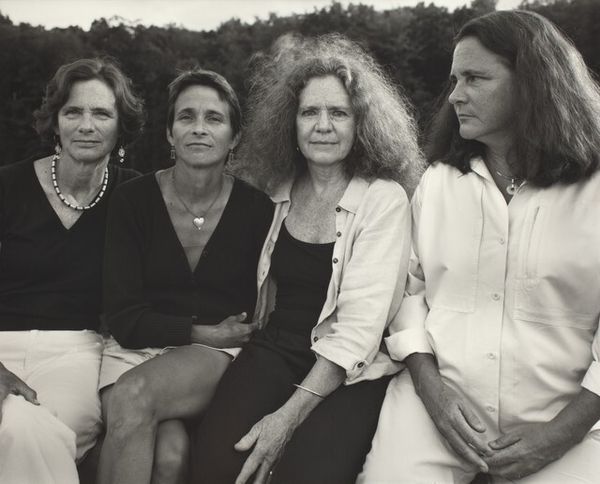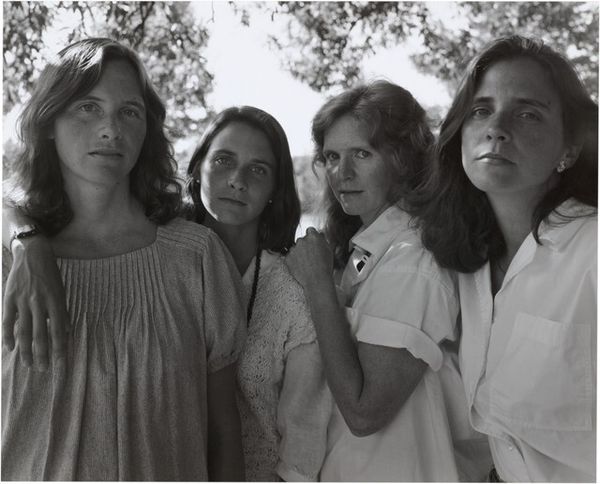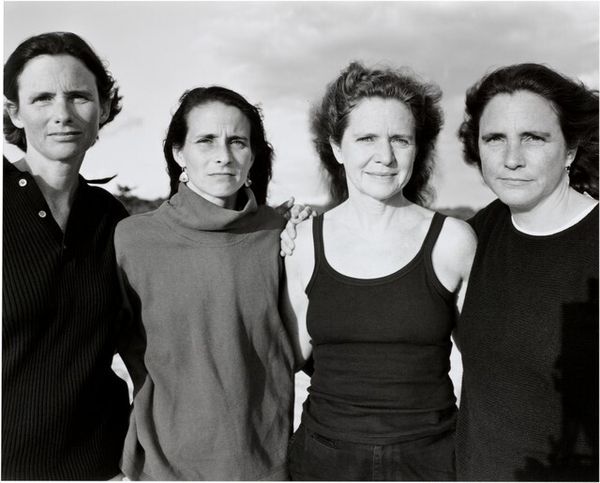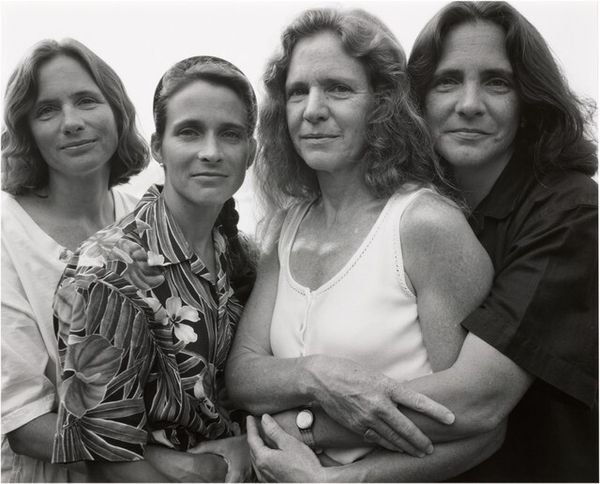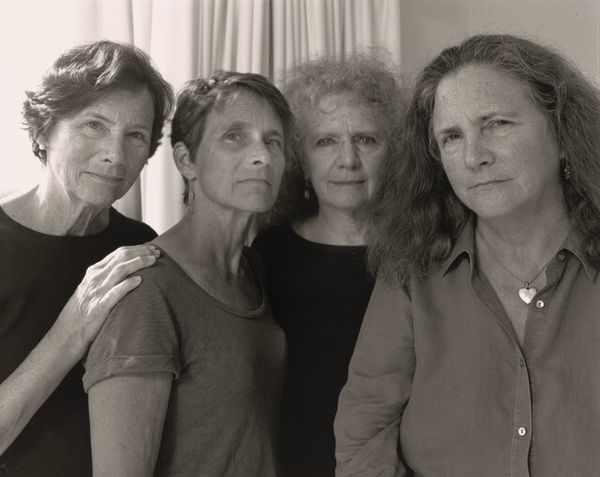
photography, gelatin-silver-print
#
portrait
#
contemporary
#
outdoor photograph
#
street-photography
#
photography
#
group-portraits
#
gelatin-silver-print
#
monochrome photography
#
monochrome
Dimensions: sheet: 20.2 x 25.2 cm (7 15/16 x 9 15/16 in.)
Copyright: National Gallery of Art: CC0 1.0
Curator: What a stark yet compelling image. We’re looking at Nicholas Nixon’s "The Brown Sisters, Watertown, Massachusetts," taken in 1991. This is a gelatin silver print, part of his ongoing series begun in 1975 where he photographs his wife and her three sisters annually. Editor: Immediately, I'm struck by the tonal range within the monochrome. The composition is classically simple, yet their somber expressions, amplified by the high contrast, suggest a heavy, perhaps even burdened, intimacy. Curator: Nixon’s series is fascinating precisely because of this yearly repetition. It transforms the private, familial relationship into a very public, almost scientific observation of aging and the passage of time. It also speaks volumes about the evolving role of women. Editor: True, and it's interesting how that transformation is echoed in the formality of the posing. The serial nature minimizes stylistic variations; it directs us towards purely analyzing their faces, searching for minute alterations in line and texture—emphasizing the materiality of aging itself. It reads as a raw semiotic study. Curator: Right. It challenges the idealization often found in portraiture, particularly in the context of family photography. The unwavering gazes seem to push back against easy interpretation. It really encourages us to consider the relationship between photographer and subject. Does the constant gaze of the lens affect the women themselves, influence their choices? It provokes important conversations. Editor: Indeed, the lack of adornment or contrived posing throws into stark relief the unyielding gaze Nixon fosters with the camera. I would also point out that his approach allows light and shadow to create incredible dimensionality in each portrait. It’s like the photograph wants to embrace you but knows you are going to study and probe and it does not appreciate it. Curator: That’s astute. What began as a personal project, driven by the photographer’s familial ties, has grown into an important document that confronts our perception of aging, familial bonds, and how we interpret the human face. Editor: Ultimately, beyond its social and cultural implications, it’s a triumph of formal portraiture; and I find myself drawn back to their direct gazes. They command our attention.
Comments
No comments
Be the first to comment and join the conversation on the ultimate creative platform.
